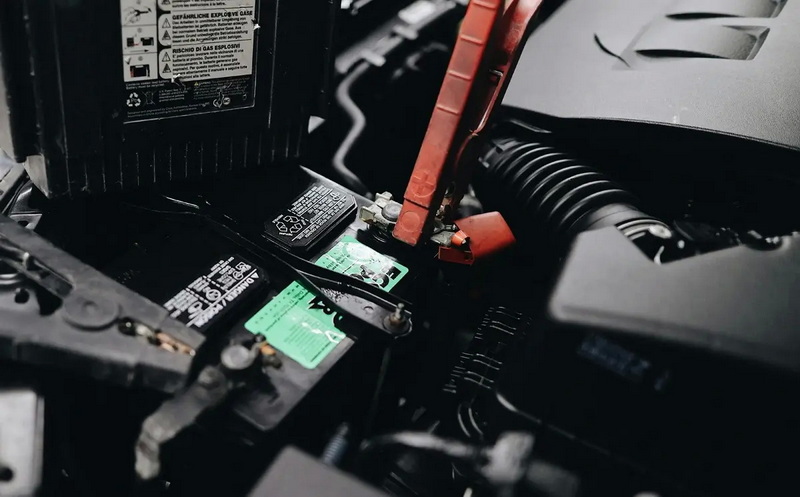Content Menu
● Understanding Your Electric Golf Cart
● Locating the Charging Port
● Preparing for Charging
● Plugging in Your Electric Golf Cart
● Charging Duration and Best Practices
● Disconnecting the Charger
● Maintenance Tips for Longevity
● Safety Precautions
● Troubleshooting Common Issues
● Environmental Considerations
● Conclusion
● FAQ
>> 1. How often should I charge my electric golf cart?
>> 2. Can I use an extension cord to charge my golf cart?
>> 3. How long does it take to fully charge an electric golf cart?
>> 4. Is it safe to leave my golf cart charging overnight?
>> 5. How can I tell if my golf cart is fully charged?
Electric golf carts have become increasingly popular for their eco-friendly nature and ease of use. Whether you're a seasoned golfer or a newcomer to the sport, knowing how to properly plug in and charge your electric golf cart is essential for maintaining its performance and longevity. In this comprehensive guide, we'll walk you through the process of plugging in your electric golf cart, provide valuable tips, and answer some frequently asked questions.
Understanding Your Electric Golf Cart
Before diving into the charging process, it's important to familiarize yourself with your electric golf cart and its components. Most electric golf carts run on 6-volt, 8-volt, or 12-volt batteries, connected in series to create a total voltage sufficient to operate the cart[2]. The typical voltage for many golf carts is 48 volts.
Locating the Charging Port
The first step in plugging in your electric golf cart is to locate the charging port. This is typically found on the side of the cart, near the rear of the vehicle. It's usually a small, rectangular port with a rubber cover that can be easily removed. The port is often labeled with the words "charge" or "charging port" and may have a lightning bolt symbol[1].
Preparing for Charging
Before you begin the charging process, there are a few important steps to take:
1. Choose a well-ventilated area: Select a location that is dry, stable, and away from direct sunlight and extreme temperatures[3].
2. Turn off the golf cart: Ensure the cart is turned off and the key is removed from the ignition for safety reasons[1].
3. Inspect the battery and charger: Check for any signs of damage, corrosion, or leaks. Clean the battery terminals if necessary[3].
4. Gather necessary equipment: Make sure you have a compatible charger, safety goggles, and gloves[8].
Plugging in Your Electric Golf Cart
Now that you've prepared everything, let's go through the step-by-step process of plugging in your electric golf cart:
1. Remove the charging port cover: Locate the charging port on your golf cart and remove the protective rubber cover.
2. Connect the charger: Take the charger plug and insert it into the charging port. Ensure it's securely connected[1].
3. Plug into power source: Connect the other end of the charger to a suitable power outlet. It's recommended to use a dedicated outlet or charging station designed for electric vehicles[1].
4. Verify connection: Double-check that both ends of the charger are securely connected.
5. Monitor charging progress: Most modern chargers will automatically begin charging once plugged in. Many have indicator lights or displays to show charging status[3].
Charging Duration and Best Practices
The time it takes to fully charge your golf cart can vary depending on the battery capacity and charger output. Typically, it takes about 6-8 hours for a complete charge[4]. Here are some best practices to follow:
- Allow for full charge: Let the cart charge fully before using it again[1].
- Avoid interruptions: Try not to interrupt the charging process unless necessary[3].
- Regular charging: Charge your golf cart after each use, even if the battery isn't completely depleted[3].
- Avoid overcharging: Use a charger with an automatic shutoff feature or set a timer to prevent overcharging[3].
Disconnecting the Charger
Once the charging is complete:
1. Unplug from power source: First, disconnect the charger from the wall outlet[6].
2. Disconnect from cart: Carefully remove the charger plug from the golf cart's charging port[6].
3. Replace port cover: Put the protective rubber cover back on the charging port.
4. Store charger: Properly coil the cables and store the charger in a cool, dry place[6].
Maintenance Tips for Longevity
To ensure your electric golf cart's battery remains in top condition:
- Keep batteries clean and dry
- Check water levels regularly (for lead-acid batteries)
- Inspect for corrosion and clean terminals as needed
- Store the golf cart in a cool, dry place when not in use
Safety Precautions
Safety should always be a priority when dealing with electrical equipment. Here are some important safety measures to keep in mind:
- Wear protective gear: Use safety goggles and gloves when handling batteries and chargers[8].
- Ensure proper ventilation: Charge in a well-ventilated area to disperse any gases produced during charging[7].
- No smoking or open flames: Keep the charging area free from potential ignition sources[7].
- Avoid water contact: Never charge in rain or allow liquids to come into contact with the charger or cables[7].
Troubleshooting Common Issues
If you encounter problems while charging your golf cart, consider these common issues and solutions:
- Charger not working: Check connections and power source. Ensure the charger is compatible with your golf cart model.
- Slow charging: This could indicate aging batteries or a faulty charger. Consider professional inspection.
- Overheating: Immediately disconnect the charger and allow it to cool. Have it inspected by a professional.
Environmental Considerations
Using an electric golf cart is already an environmentally friendly choice. To further reduce your carbon footprint:
- Consider using solar charging stations if available at your golf course or community.
- Properly dispose of old batteries through recycling programs.
- Maintain your cart regularly to ensure efficient energy use.
Conclusion
Properly plugging in and charging your electric golf cart is crucial for its performance and longevity. By following the steps outlined in this guide, you can ensure that your golf cart is always ready for your next round on the green. Remember to prioritize safety, perform regular maintenance, and follow the manufacturer's guidelines for the best results.

FAQ
1. How often should I charge my electric golf cart?
It's best to charge your golf cart after each use, even if the battery isn't fully depleted. This practice helps maintain battery health and ensures your cart is always ready for use.
2. Can I use an extension cord to charge my golf cart?
It's not recommended to use extension cords for charging golf carts. They may not provide sufficient power and can pose safety risks. Always use a dedicated outlet or charging station[1].
3. How long does it take to fully charge an electric golf cart?
Typically, it takes about 6-8 hours to fully charge an electric golf cart. However, this can vary depending on the battery capacity and charger output[4].
4. Is it safe to leave my golf cart charging overnight?
Most modern chargers have automatic shutoff features, making it safe to charge overnight. However, it's always best to follow the manufacturer's recommendations and use a timer if needed[3].
5. How can I tell if my golf cart is fully charged?
Many chargers have indicator lights or displays that show when charging is complete. Some golf carts also have built-in charge indicators. Refer to your cart's manual for specific guidance[3].









































